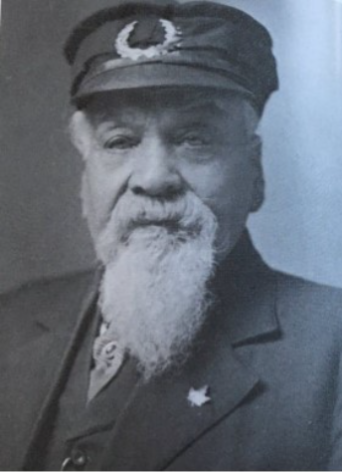Animals have been tamed and
domesticated to work for and provide service to humans for over ten thousand
years which, in more recent years, has expanded to animals providing support to
people living with disabilities and emotional support. We’re arguably most
familiar with two hardworking animals in particular, the dog and the horse; you
could say we go way back. Looking through our archival records, we have many
concrete examples of animals being used to assist humans at work, and a few
interesting and heartwarming stories as well.
Horses of the Fire Brigade
One famous Oxford County horse
“worked” for the Woodstock fire brigade for many years. The horse was known as
“Farmer”. Farmer worked alongside other horses to assist the fire brigade in
putting out fires and saving the lives, homes, and livelihoods of local
residents. Farmer was responsible for pulling the two-wheeled fire-hose cart.
He was a large brown horse who became famous locally as he was often seen
racing through the streets to a fire.
Before the use of horses, the
carts had to be pulled by members of the fire brigade. Horses allowed the
firefighters to arrive at fires much quicker, every second counted. Farmer made
his first fire run to Dufferin House in 1886. While horses greatly improved the
efficiency of the fire brigade, there were some issues with relying on horses.
For example, sometimes when a fire broke out a horse wasn’t available being it
was being shod at the blacksmith, or in some cases horses would refuse to move.
Horses could also get injured or become sick. By 1901, the Woodstock fire
brigade had four horses in total.
Farmer served for 17 years. In
1903 he got injured and had to be retired. His last run was on January 15,
1903. A year later he was put down and a grave was bought for him. Four dozen
photographs of Farmer were gifted to some of the senior firefighters who worked
with Farmer, and a large photo was hung in the fire hall.
A four-year-old horse named
Dawn, and a five-year-old named Dusk were purchased to replace Farmer. Dr. Rudd
was the veterinarian who most often attended to the horses. Dusk died of
enteritis (small intestine inflammation) in 1908. A horse named “Day” replaced
Dusk. By 1909 the fire brigade had expanded to five horses. Over the years
horses came and went. According to “Defined under Pressure: A History of the
Woodstock Fire Department”, written by Elain Becker, firefighter Fred Beam had
driven the horse-drawn fire-hose reels before the department switched to
motorized trucks. Beam said that the horses often knew what to do when the
alarm sounded and would move into position in front of the carts on their own.
Keeping the City Safe
Not only did Oxford County
residents use animals to help put out fires, they also used them to fight
crime. Marshall Anderson, or Marsh as he was better known, was a night
patrolman hired by local businessmen of Woodstock in 1882 to safeguard their
businesses after dark. The regular police force would finish their day shift
and Marsh would take over. Despite being hired for security by merchants, his
role covered all areas of police work. He held this role for 43 years and
gained the respect of the entire community. He patrolled Dundas Street from
Vansittart Avenue to Wellington Street. However, Marsh wasn’t the only one responsible
for keeping the streets of Woodstock safe at night. His dog, named Seeker, a
Great Dane and Bloodhound mix, worked alongside him each night for 10 years. He
sent Seeker into the back alleys and dark buildings first to sniff out trouble.
If Seeker growled, Marsh would shine his light in the dog's direction and
arrest any wrongdoers if needed. Marsh first adopted Duke as his companion when
he was just a puppy, and the dog remained by his side until he passed away at
the age of 11. The crime-fighting pair were celebrated members of the local
police force.

Portrait of Marshall Anderson
Transportation and Deliveries
Animals were a means of
transportation for humans long before the invention of the automobile, train, bicycle,
or the airplane. Horses in particular have been taking humans to where they need to
go for thousands of years. Before it became a sport and hobby, riding horses
was one of the primary means of travel historically. Horses also pulled wagons,
carriages, and carts and, before the invention of buses, were used to pull coaches
for public transportation. Horses, mules, and oxen have also played an
essential role in the transportation of goods and services; whether they were
pulling wagons and carts delivering products or assisting workers in their
labour, many industries would likely not be as developed as they are today
without the assistance of animals.
Check out the slideshow of
“animals at work” below.